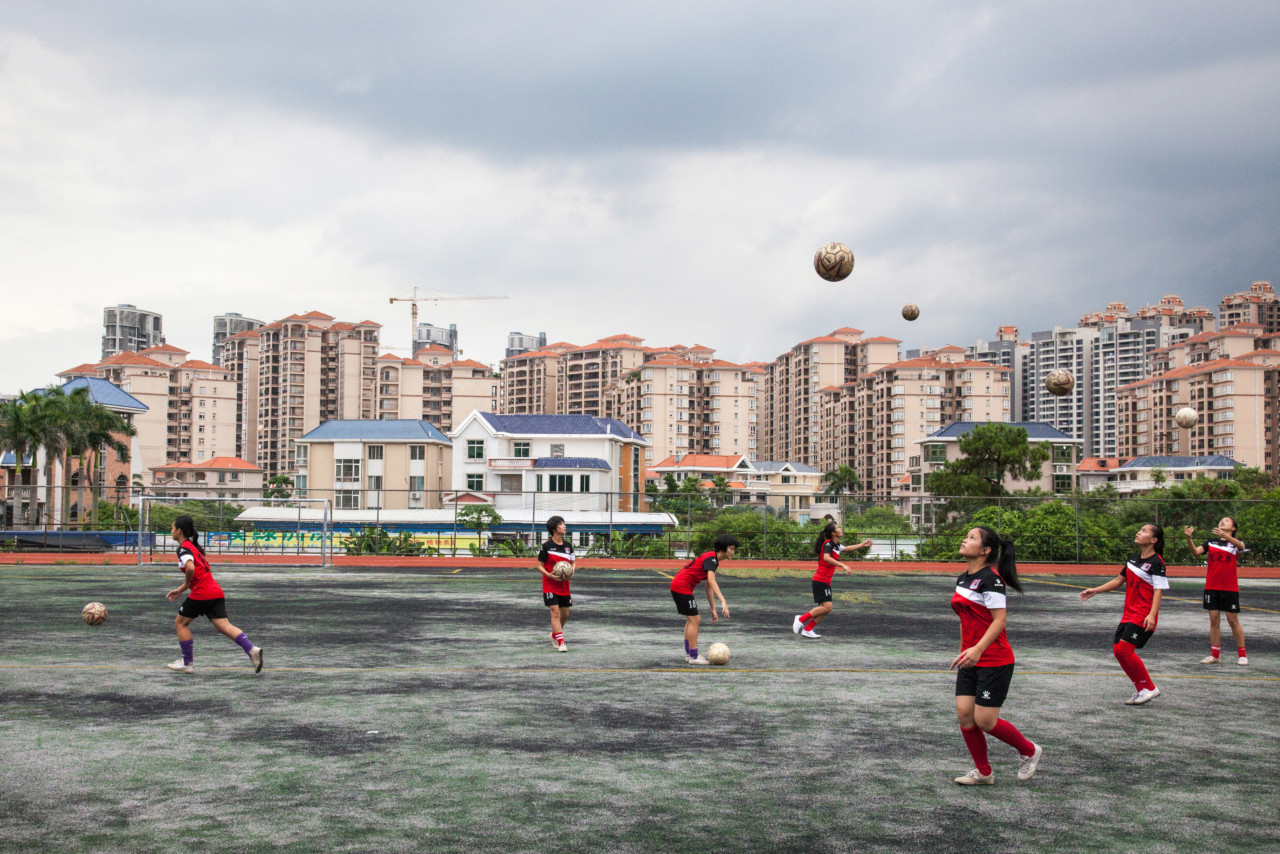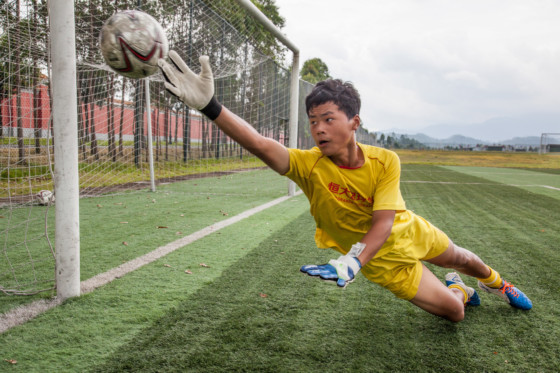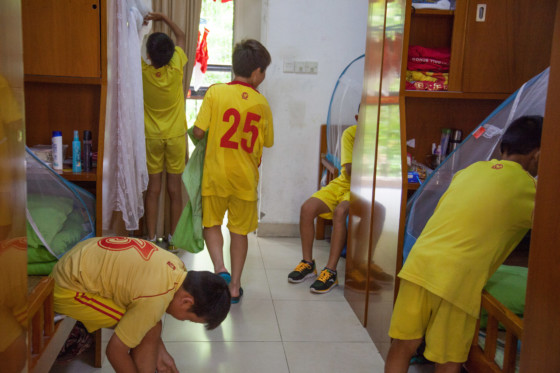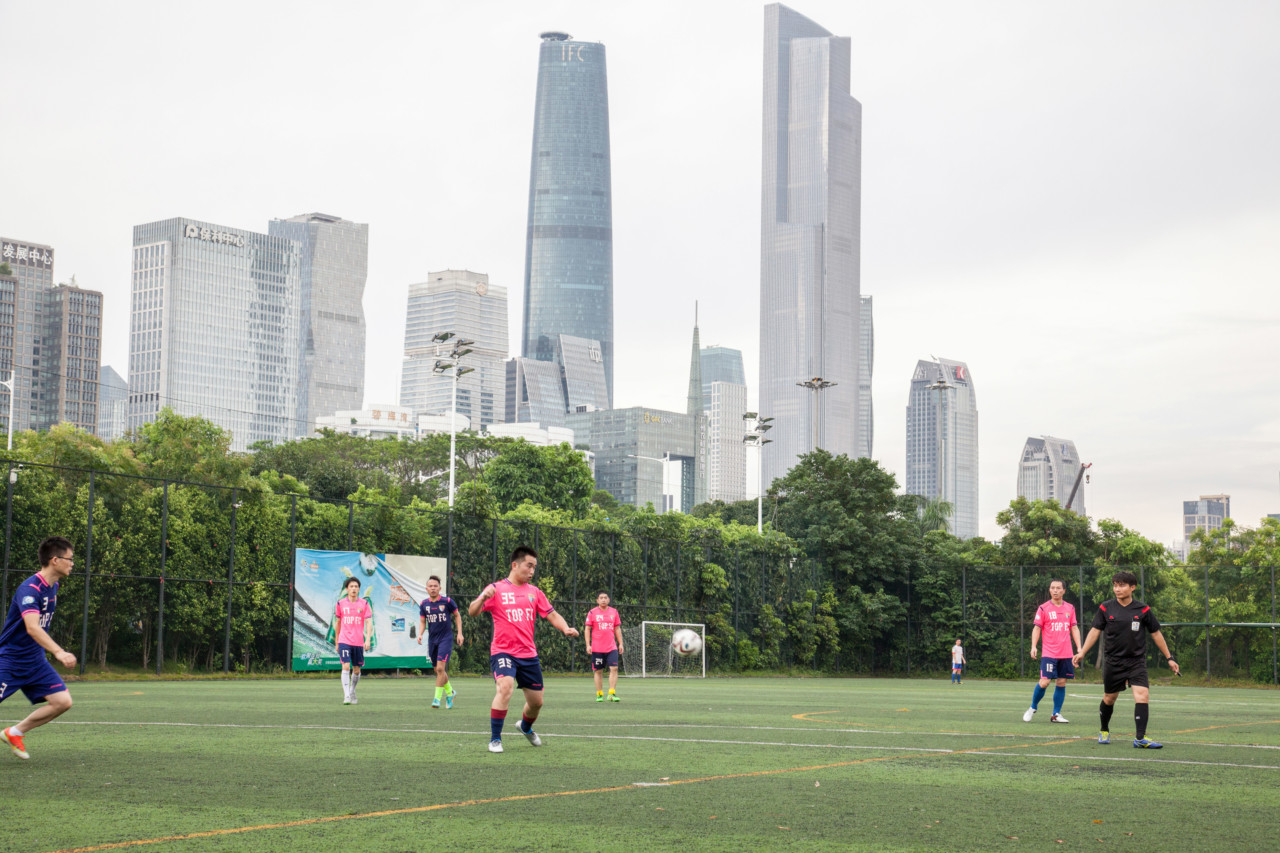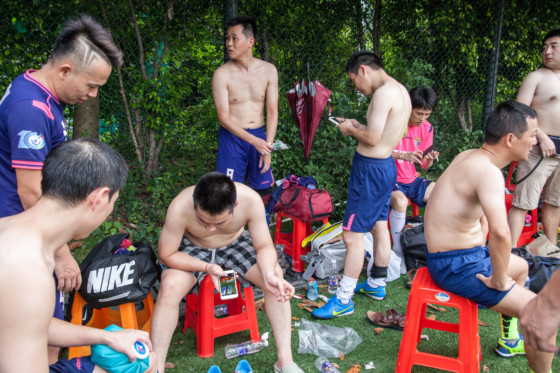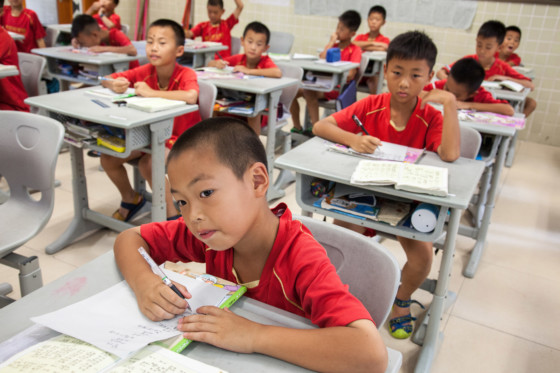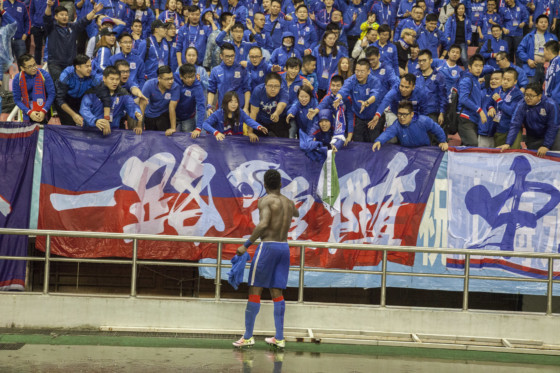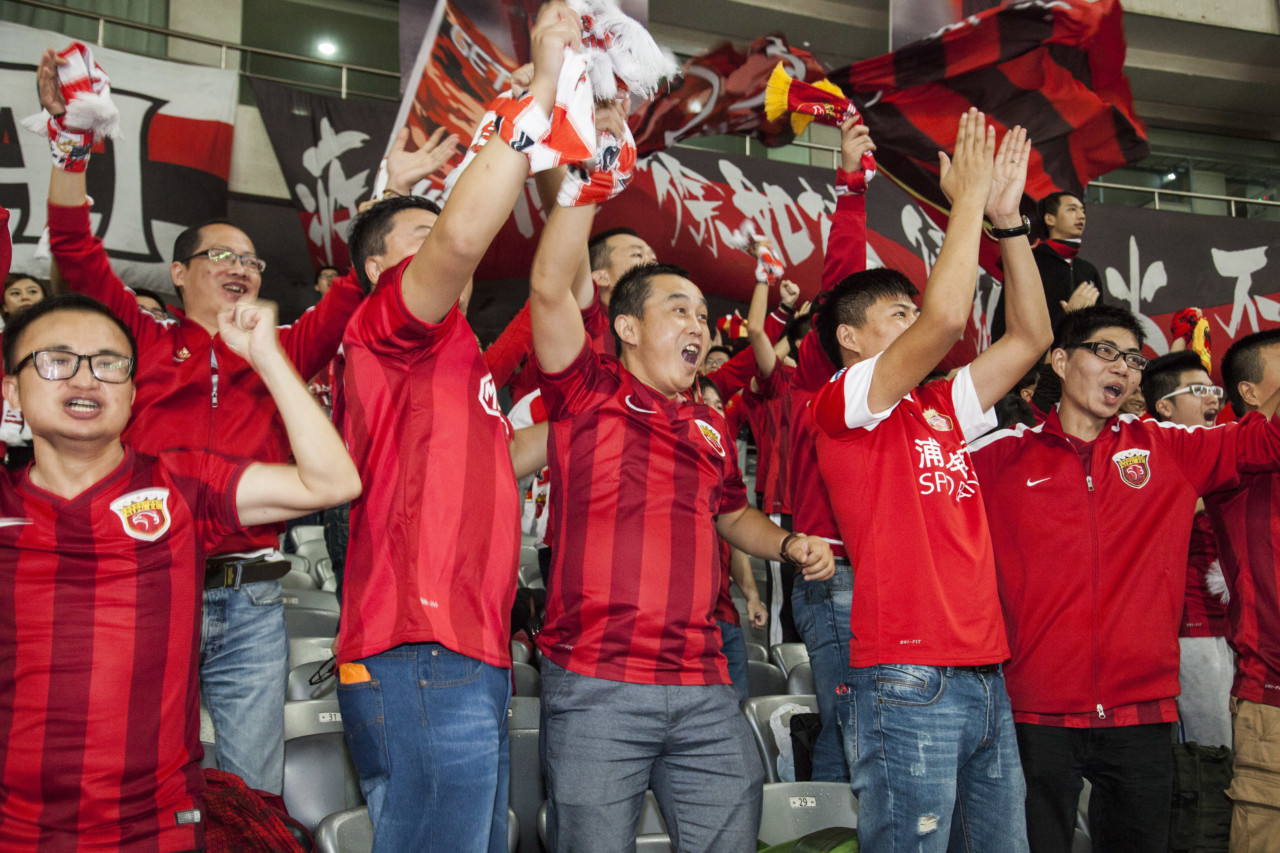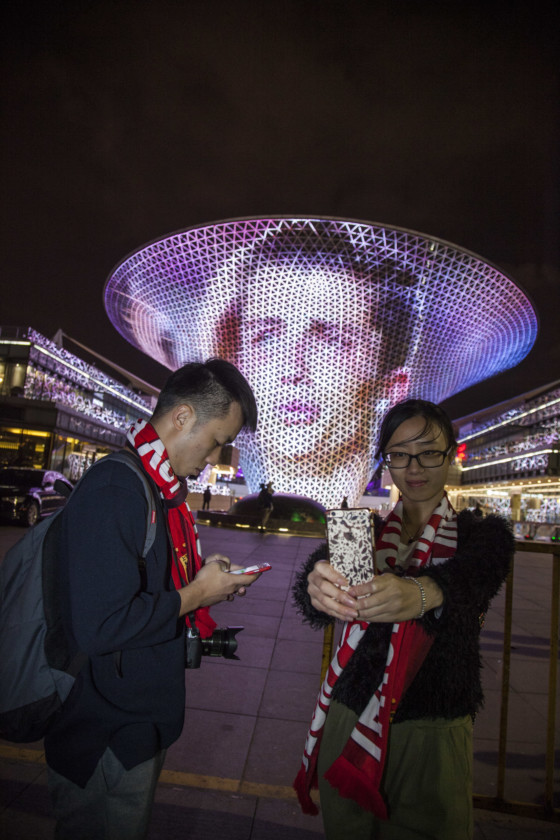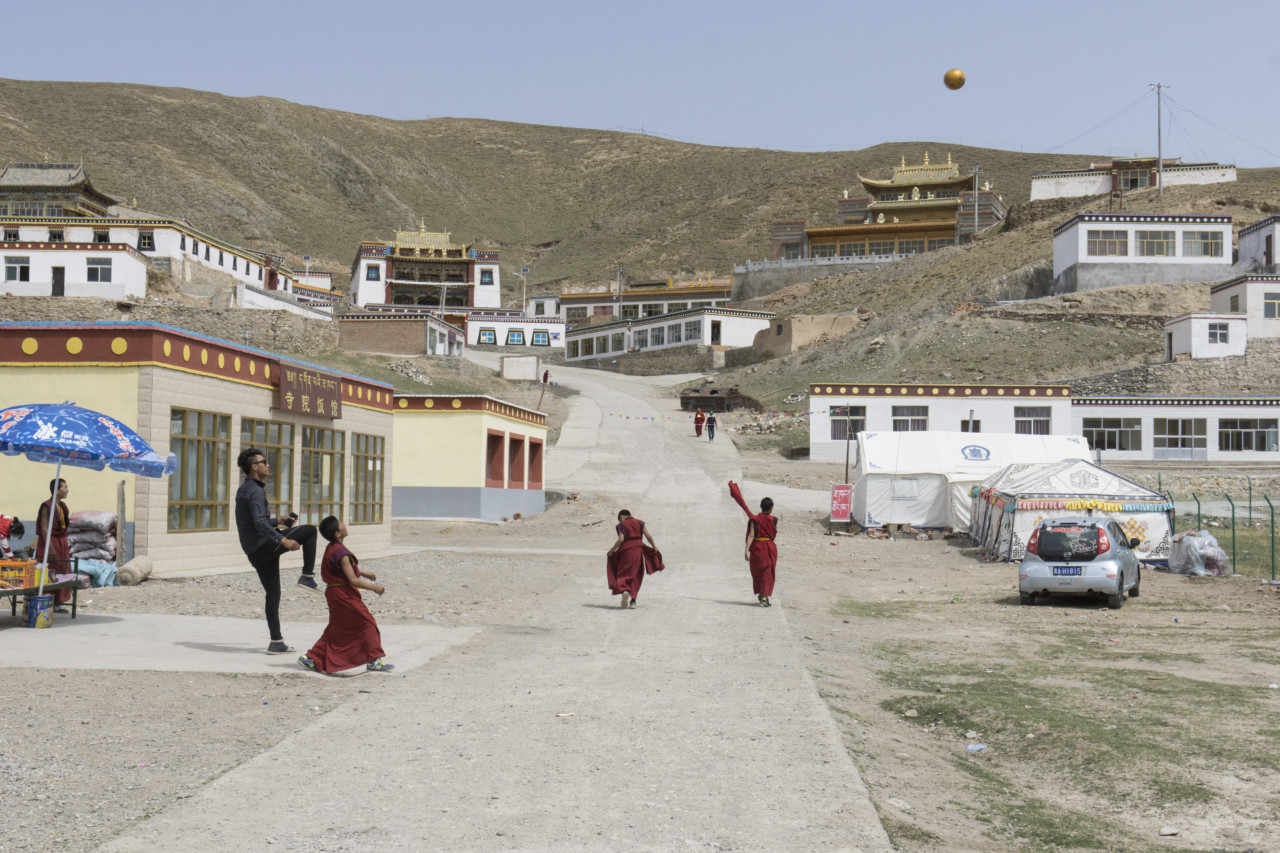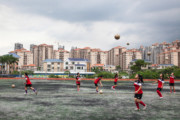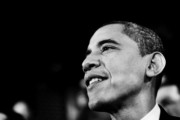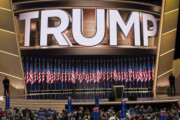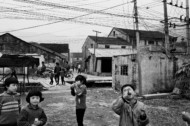China’s Football Gold Rush
Chris Steele-Perkins explores the growth of football culture in China
In January 2017 the press surrounding the transfer window for many football leagues is, as it has been for decades now, dominated by the huge figures players are bought for, as they ping pong from club to club, weighing up strategic career direction and professional fulfilment with the promise of large amounts of cash. However, a relative newcomer to the international market has sparked the most debate in the UK: China, whose clubs have been snapping up some of the world’s best players with seemingly endless amounts of cash. In December, Chelsea’s midfielder Oscar signed to join Shanghai SIPG for an estimated £60m; Nigeria midfielder John Obi Mikel also announced he’s leaving Chelsea and joining Tianjin TEDA FC in China for a reported £140,000 a week; and former Manchester City striker Carlos Tevez is joining Shanghai Shenhua for a reported £610,000 a week, making him the highest paid player in the world.
The so-called ‘gold rush’ is led from the highest level in China; President Xi Jinping – a huge football fan, who hopes his country will one day host the World Cup – is determined to join the international major players, pouring funds into initiating football projects. His plan calls for 50,000 schools to have a strong emphasis on soccer by 2025 (compared to 5,000 in 2015). However, by mid January, 2017, China’s spending spree in England was tempered with the announcement that the Chinese Super League clubs will only be allowed to have three non-Chinese players per game in their next season.
While critics in the UK have expressed the opinion that China’s unrivalled financial ability to lure players is unfair, Liverpool manager Jurgen Klopp said that, “the rest of Europe thinks the same thing about England.” Indeed, New York Times journalist Rory Smith pointed out in a BBC radio interview that “there is an argument to say that the Chinese Super League are doing nothing that the Premier League weren’t doing twenty years ago,” in seeking to build teams with players that had previously been massively successful elsewhere in the world, and cited Italian former footballer Gianfranco Zola, who moved to Chelsea in 1996 for £4.5m after a successful career in Italy, as an example of just that.
Magnum’s Chris Steele-Perkins, who has a personal interest in documenting the culture that surrounds football, travelled to China in 2016 to explore the growth in followers of the sport, looking at various aspects of grass-roots football, meeting fans and visiting the Evergrande football academy. The Evergrande Football School in Qingyuan, Guangdon – the largest of its kind in the world – is a private school that boasts state-of-the art football training facilities, offering training in football alongside usual, more academic subjects.
"I was very intrigued by the combination of football and China and the idea that they don’t have a national sport"
- Chris Steele-Perkins
“I was very intrigued by the combination of football and China and the idea that they don’t have a national sport,” says Chris Steele-Perkins. “They have sports that they’re good at, but they’re individual sports like gymnastics or table tennis or something like that, rather than a team sport. There seems to be a space in China which in unoccupied and football could be it. I was also interested in the idea that they are trying to buy their way into football and what that looked like.”
At around $5,800 (China’s per capita GDP is $6,800), Evergrande is not accessible to most children in China. “I met pupils who were the kids of foreign diplomats and things like that,” says Steele-Perkins. “They just thought it was cool to have their kids in the school.” Outside of the expensive bubble of Evergrande, access to football pitches is less commonplace. “I spoke to a number of people who are involved in the game, including football fans, and the feeling was that there weren’t enough infrastructural things where you can actually go and play without a three-hour journey in one direction and a three hour journey home again afterwards.” It’s something that President Xi is hoping to address with plans to grow the number of soccer fields across the country from under 11,000 to over 70,000 by the end of 2020.
“There isn’t that background culture of football, of kids kicking balls around in backstreets against the neighbor’s wall,” says Steele-Perkins. Without a history of football culture and rites like “going down the pitch with your dad on a Sunday afternoon and shouting out from the sidelines and getting rained on” he wanted to see how they have embedded themselves into football culture. His portraits of fans at home show them surrounded by huge collections of pristine and signed memorabilia, suggesting that their passion for the game, like their prime minster’s, manifests in their spending.
Looking ahead, the photographer believes China’s investment may start to show results in 10-15 years – a similar amount of time soccer took to really embed in American culture when English footballers like David Beckham first began to formally visit in the 90s. “It’s hard to know how it will pan out,” he says, “but the Chinese do these ten-year plans and they often are quite successful at them. I have tried to look at the grass-roots and the beginnings of a possible revolution in the football world.”


